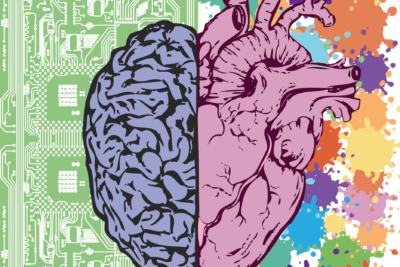Identifying unmet need
Following the 2019 death of a homeless person, a sub-group of the Liverpool City Complex Lives Multi-Disciplinary Team (‘City MDT’) have been reflecting on how similar deaths could be prevented. Despite being well known to all homeless services and many hours of MDT joint work, it had been impossible to find the accommodation, care and support that this individual required. A review of other complex cases within the MDT caseload identified a further 15 individuals with similar histories, high service use and professional frustration around the absence of suitable housing solutions. This highlights a critical need for an innovative approach in how we manage the most vulnerable individuals in our community who are currently ill catered for.
The current situation in Liverpool
The Liverpool Ladder: Ending Homelessness in Liverpool (August 2020) highlights the growing number of homeless people with complex needs who require input from multiple agencies. Effective multi-agency working is crucial to support the most vulnerable, challenging and complex individuals out of homelessness. The ‘City MDT’ provides a multi-agency perspective on how to best support the most complex individuals in the city. However, people with multiple and complex needs are often systemically failed due to service design and implementation that are not tailored to their needs. This results in substantial health inequalities, service exclusion and premature mortality. Increasing reliance on temporary accommodation means that individuals are unable to attain the stability they need and may actually be re-traumatised, exacerbating existing health and substance use problems.
Liverpool is currently piloting Housing First and other strategies to address acknowledged gaps in provision for people who are homeless. Individuals with multiple needs, a history of chaos and entrenched rough sleeping may be offered access to Housing First initiatives where rapid and permanent re-housing is provided in the community with wraparound support for a period of time. Housing First provides intensive support, but it is not a 24-hour service and therefore requires independent living with support. There also remains a question about how to best support two separate groups; those who require intensive case management, and those who need a model built more around assertive community treatment. This latter group are people with multiple and highly complex needs, leaving them vulnerable to a collapse of tenancy and a return to homelessness.
Such individuals are discussed weekly in the Complex Lives MDT, where professionals are frustrated by the inability to offer effective accommodation and support. Cases are escalated up to senior managers and housing commissioners, but providing suitable accommodation and care remains impossible in the current system. Hence the need for development of a new Tertiary Prevention Model: to compliment the current system which is effective for the majority of homeless individuals.
The target population
There are currently 15 highly vulnerable, challenging, chaotic and complex individuals known to homelessness services in Liverpool city. They all have multiple experiences of childhood adversity; adulthood trauma; chronic health problems; social isolation; financial and housing problems; escalating substance problems and offending behaviours. All of them have diagnoses of both a personality disorder and cognitive impairment: a combination that impairs their social functioning and leaves them unable to engage in traditional therapeutic models of care used in homelessness services. Multiple experiences of harm, adversity and rejection leads to chronic changes to personality and an inability to engage with mainstream services or meet expected recovery timelines.
Their multiple, complex needs require personalised interventions and support. This group of people have become ‘stuck’ between a network of services that intend to help them. But their multi-dimensional difficulties (including: emotional, cognitive, physical, offending, substance misuse, and relational elements) combine in a complex array of risks. They are both highly vulnerable and also a risk to others. Exclusion from existing provision often occurs as a consequence of service inclusion criteria, and their difficulties with engagement. Most of these individuals are unlikely to ever be able to manage their own tenancy even with high levels of support.
The case for change: Why current service provision misses the mark
This group of people are all well known to a wide range of service providers (Social Services, medical and Mental Health services, addiction services, Local Authority, Housing and Homelessness Providers Police, Probation, and Prisons). They present with exceptionally challenging behaviours that pose disproportionately high costs to all services and lead to:
- Poorly managed physical and mental health conditions, resulting in high usage of acute medical and mental health services;
- Risk-taking behaviour which leads to both significant vulnerability and substantial risks to others;
- Being barred from multiple service providers (including accommodation providers);
- Involvement with criminal justice and frequent short prison sentences;
- Vicarious trauma for staff involved in their care, leading to high rates of absence and staff turnover.
Without a holistic approach, each separate agency is quite likely to underestimate these individuals’ support needs – such that none of the services involved see a need to take a leading role in their care. This means they often ‘slip through the cracks’ and are only partially supported by multiple agencies – with little benefit (and maximum stress) to the person themselves, compounding a chronic history of failure and rejection. Services that focus only a small subset of the complex needs that a person presents with, develop only a limited understanding (or commonly, a misinterpretation) of their difficulties, resulting in provision of inappropriate services.
Being expected to fit into relatively narrow service criteria can result in replication of the rejection many of this group have experienced throughout their lives. When their difficulties are not fully assessed or understood by services, they are offered support that is not tailored to their individual needs and is therefore unhelpful (and can even be harmful). Working in isolation, without understanding the full range of psycho-social difficulties facing these individuals, practitioners can also hold unrealistic expectations about their potential outcomes. Then, when the person’s difficulties do not improve, staff and services can feel hopeless and discharge them: leaving the person less likely to be offered (or engage with) this support in the future.
A proposed model for enhanced support
What is needed is a service that is capable of: (1) developing a detailed understanding of each person’s difficulties; (2) designing an effective, tailored care plan; and (3) coordinating and monitoring delivery of that care. Promoting a shared understanding between services will make partnership work easier, ensuring delivery of the most appropriate and consistent support. Consequently, the individuals will feel contained and safe, knowing that services are working jointly to support them. This will help them develop trust with practitioners, maximising their motivation to engage and cooperate.
The following summarises key features of this provision:
- The person is offered a safe home with long-term, consistent and unconditional support to develop personal skills and build positive relationships (including therapeutic support, activities, groups, and skills development).
- Cognitive difficulties, PTSD, attachment struggles, and mental health difficulties are identified and met with tailored support. Staff understand challenging behaviour as a learnt response arising from attachment style, adversity and/or trauma.
- An increased sense of connection helps to build new experiences of feeling safe, which allows trust to develop and increases motivation and hope for all involved. Realistic outcomes are defined, monitored and continuously adjusted.
This proposed new model is intended to provide highly supportive and psychologically informed accommodation for the most vulnerable, complex, chaotic and challenging people in Liverpool city. This service fills a gap where there is currently no provision, complementing the rest of the services across the city, aiming to provide better outcomes for each individual and all the services currently providing inputs across the city. This provision will substantially reduce service demands and costs for an array of services, including:
- Police, Prisons and Probation
- Social Services
- Medical and Mental Health Services (Acute and chronic)
- Addiction Services
- Local Authority, Housing and Homelessness Providers.
In brief, the service design is currently envisaged as follows (click each heading for details):
Physical Environment
- Three buildings: two male and one female, providing self-contained units for 12 people.
- Staffed 24 hours a day to provide support and supervision.
- Space will be provided for assessment, therapeutic work and skill development. (Communal spaces will be limited to prevent spaces for ‘flash points’ between residents.)
Psychology Informed Environment
Following assessment and formulation individuals will receive tailored therapeutic psychological input. Forms of therapy to be offered include:
- Cognitive Analytical Therapy
- Acceptance and Commitment Therapy
- Cognitive Behavioural Therapy
- Motivational Interviewing
The service will be responsive to moments of crisis or increased need to provide rapid support as required.
Staffing
- Each person will have a nominated support worker to lead their care: holding 1:1 sessions with them, co-ordinating service input, advocating for them and arranging quarterly MDT reviews.
- All staff will receive psychological support and skill development.
- Detailed psychological understanding of need, trauma, cognitive impairment and mental health will allow better working between staff, services and the individual.
Partnership Working
- All individuals will have a comprehensive multi-disciplinary needs assessment, with input from: Neuropsychology; Occupational Therapy; Social Work; Homelessness Services; physical health; Mental Health; Addiction Services; criminal justice and police.
- The support worker will lead care co-ordination: meeting regularly with the individual, liaising with all other specialities and arranging MDT meetings.
This will be an adult service for people aged over 18. The accommodation environment will be neuropsychologically-informed to promote safety for all, thereby reducing the strain on staff members in order to maximise staff job satisfaction and minimise sickness levels and burnout.
The inclusion criteria will ensure that the most vulnerable, complex, chaotic and challenging people in Liverpool will access the service.
Inclusion Criteria:
- A history of homelessness and exclusion from multiple housing providers
- Evidence of vulnerability and risk to self and others, and from others or self-neglect
- Needs which are present in two or more of the following domains:
- Physical Health
- Mental, emotional or psychological Health
- Poor relational skills
- Social Care
- Criminal Justice
- Drug and Alcohol Addiction
Based on current experience, it is anticipated that most of the identified individuals are unlikely to develop skills to manage their own tenancy or the stability to manage in mainstream hostel accommodation. Therefore, there is no expectation of move on from this service, although a small number may with time, be able to move to less intensively supported accommodation.
Outcomes
Given the level of complexity posed by this group of people, outcomes will take time to be visible (although it is anticipated that reductions in offending, ASB and risk-taking will be seen reasonably quickly). The first year of support would focus on individuals gaining stability across the various physical, health, neuropsychological, and social domains. The second year would focus on enhancing regulation skills and developing an understanding of how the individual can create new ways to relate to others and themselves. In the third year, increased competency will become evident.
At an individual level, outcomes may be measured in terms of reduced access of acute services (as a result of few episodes of unplanned and emergency interventions), stability in accommodation, increased quality of life, the reduced impact of trauma, and (with time) increased levels of physical and mental wellbeing. Capturing qualitative and quantitative monitoring and outcome data will not only inform service development, but would also be disseminated widely to inform future policy and practice.
Although not formally studied it is expected that a similar group will be present in towns and cities across the country. Therefore, there is a need for an effective approach which can be implemented evaluated and if successful replicated country-wide. Liverpool has been at the front of new ways of working with homeless and vulnerable individuals for many years; most recently with the establishment of a highly effective city wide, multi-agency complex lives MDT, the ‘Everyone In’ campaign which has gone above and beyond government guidance and, the new ‘Liverpool Ladders’ policy plan which has received widespread support. Given the track record of innovation and excellence and multiagency work being well-established in the city already, Liverpool is seen as the perfect location for this new and innovative approach to caring for the most chaotic and vulnerable in society.




